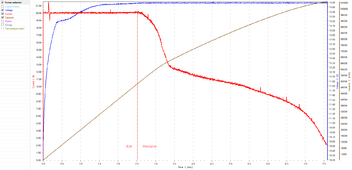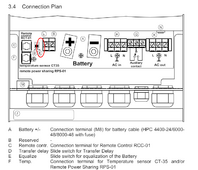off.the.grid
New Member
- Joined
- Dec 26, 2021
- Messages
- 145
I suspect I have a battery thats failed in my bank of AGM batteries, they are configured in 2S2P as a 24V bank.
I have had a victron battery balancer installed and ive noticed fairly recently that the alarm warning light has been coming on in the morning for some time.
I guess the only way to test this is to disconnect them all and measure the voltages?
Any point in performing a load test on the bank by running the kettle or something?
My suspicion is that one battery in the bank has failed. I also have the impression that the bank is not holding up a good charge anymore as the power went out for the first time the other week when the inverter shut off at 50%.
I have had a victron battery balancer installed and ive noticed fairly recently that the alarm warning light has been coming on in the morning for some time.
I guess the only way to test this is to disconnect them all and measure the voltages?
Any point in performing a load test on the bank by running the kettle or something?
My suspicion is that one battery in the bank has failed. I also have the impression that the bank is not holding up a good charge anymore as the power went out for the first time the other week when the inverter shut off at 50%.





